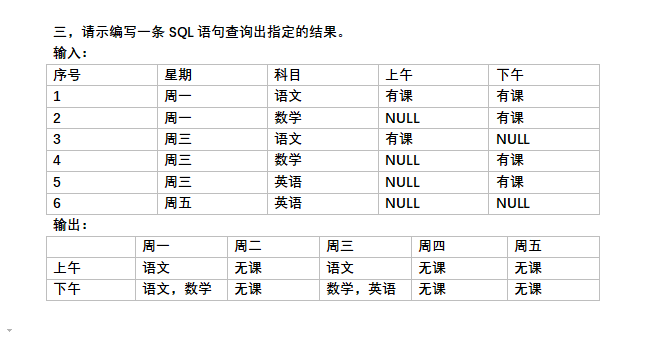I'm not sure if this is even possible. But I was wondering if anyone knows how to make a hyperlink pass some variables and use POST (like a form) as opposed to GET.
问题:
回答1:
You create a form with hidden inputs that hold the values to be posted, set the action of the form to the destination url, and the form method to post. Then, when your link is clicked, trigger a JS function that submits the form.
See here, for an example. This example uses pure JavaScript, with no jQuery — you could choose this if you don't want to install anything more than you already have.
<form name="myform" action="handle-data.php" method="post">
<label for="query">Search:</label>
<input type="text" name="query" id="query"/>
<button>Search</button>
</form>
<script>
var button = document.querySelector('form[name="myform"] > button');
button.addEventListener(function() {
document.querySelector("form[name="myform"]").submit();
});
</script>
回答2:
You don't need JavaScript for this. Just wanted to make that clear, since as of the time this answer was posted, all of the answers to this question involve the use of JavaScript in some way or another.
You can do this rather easily with pure HTML and CSS by creating a form with hidden fields containing the data you want to submit, then styling the submit button of the form to look like a link.
For example:
.inline {
display: inline;
}
.link-button {
background: none;
border: none;
color: blue;
text-decoration: underline;
cursor: pointer;
font-size: 1em;
font-family: serif;
}
.link-button:focus {
outline: none;
}
.link-button:active {
color:red;
}<a href="some_page">This is a regular link</a>
<form method="post" action="some_page" class="inline">
<input type="hidden" name="extra_submit_param" value="extra_submit_value">
<button type="submit" name="submit_param" value="submit_value" class="link-button">
This is a link that sends a POST request
</button>
</form>The exact CSS you use may vary depending on how regular links on your site are styled.
回答3:
You can use javascript functions. JQuery has a nice post function built in if you decide to use it:
JQuery Post
<script language="javascript">
function DoPost(){
$.post("WhateverPage.php", { name: "John", time: "2pm" } ); //Your values here..
}
</script>
<a href="javascript:DoPost()">Click Here</A>
回答4:
This is an old question, but none of the answers satisfy the request in-full. So I'm adding another answer.
The requested code, as I understand, should make only one change to the way normal hyperlinks work: the POST method should be used instead of GET. The immediate implications would be:
- When the link is clicked we should reload the tab to the url of the
href - As the method is POST, we should have no query string in the URL of the target page we load
- That page should receive the data in parameters (names and value) by
POST
I am using jquery here, but this could be done with native apis (harder and longer of course).
<html>
<head>
<script src="path/to/jquery.min.js" type="text/javascript"></script>
<script>
$(document).ready(function() {
$("a.post").click(function(e) {
e.stopPropagation();
e.preventDefault();
var href = this.href;
var parts = href.split('?');
var url = parts[0];
var params = parts[1].split('&');
var pp, inputs = '';
for(var i = 0, n = params.length; i < n; i++) {
pp = params[i].split('=');
inputs += '<input type="hidden" name="' + pp[0] + '" value="' + pp[1] + '" />';
}
$("body").append('<form action="'+url+'" method="post" id="poster">'+inputs+'</form>');
$("#poster").submit();
});
});
</script>
</head>
<body>
<a class="post" href="reflector.php?color=blue&weight=340&model=x-12&price=14.800">Post it!</a><br/>
<a href="reflector.php?color=blue&weight=340&model=x-12&price=14.800">Normal link</a>
</body>
</html>
And to see the result, save the following as reflector.php in the same directory you have the above saved.
<h2>Get</h2>
<pre>
<?php print_r($_GET); ?>
</pre>
<h2>Post</h2>
<pre>
<?php print_r($_POST); ?>
</pre>
回答5:
Another working example, using similar approach posted : create a html form, use javascript to simulate the post. This does 2 things : post data to a new page and open it in a new window/tab.
HTML
<form name='myForm' target="_blank" action='newpage.html' method='post'>
<input type="hidden" name="thisIsTheParameterName" value="testDataToBePosted"/>
</form>
JavaScript
document.forms["myForm"].submit();
回答6:
This is not possible using raw HTML, although you could use jQuery to add a click event handler to the link that could use the post function to issue the POST.
回答7:
HTML + JQuery: A link that submits a hidden form with POST.
Since I spent a lot of time to understand all these answers, and since all of them have some interesting details, here is the combined version that finally worked for me and which I prefer for its simplicity.
My approach is again to create a hidden form and to submit it by clicking a link somewhere else in the page. It doesn't matter where in the body of the page the form will be placed.
The code for the form:
<form id="myHiddenFormId" action="myAction.php" method="post" style="display: none">
<input type="hidden" name="myParameterName" value="myParameterValue">
</form>
Description:
The display: none hides the form. You can alternatively put it in a div or another element and set the display: none on the element.
The type="hidden" will create an fild that will not be shown but its data will be transmitted to the action eitherways (see W3C). I understand that this is the simplest input type.
The code for the link:
<a href="" onclick="$('#myHiddenFormId').submit(); return false;" title="My link title">My link text</a>
Description:
The empty href just targets the same page. But it doesn't really matter in this case since the return false will stop the browser from following the link. You may want to change this behavior of course. In my specific case, the action contained a redirection at the end.
The onclick was used to avoid using href="javascript:..." as noted by mplungjan. The $('#myHiddenFormId').submit(); was used to submit the form (instead of defining a function, since the code is very small).
This link will look exactly like any other <a> element. You can actually use any other element instead of the <a> (for example a <span> or an image).
回答8:
You can use this jQuery function
function makePostRequest(url, data) {
var jForm = $('<form></form>');
jForm.attr('action', url);
jForm.attr('method', 'post');
for (name in data) {
var jInput = $("<input>");
jInput.attr('name', name);
jInput.attr('value', data[name]);
jForm.append(jInput);
}
jForm.submit();
}
Here is an example in jsFiddle (http://jsfiddle.net/S7zUm/)
回答9:
Check this it will help you
$().redirect('test.php', {'a': 'value1', 'b': 'value2'});


